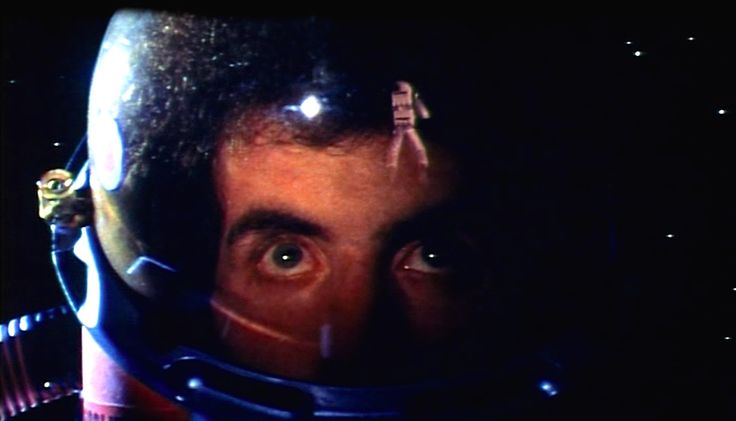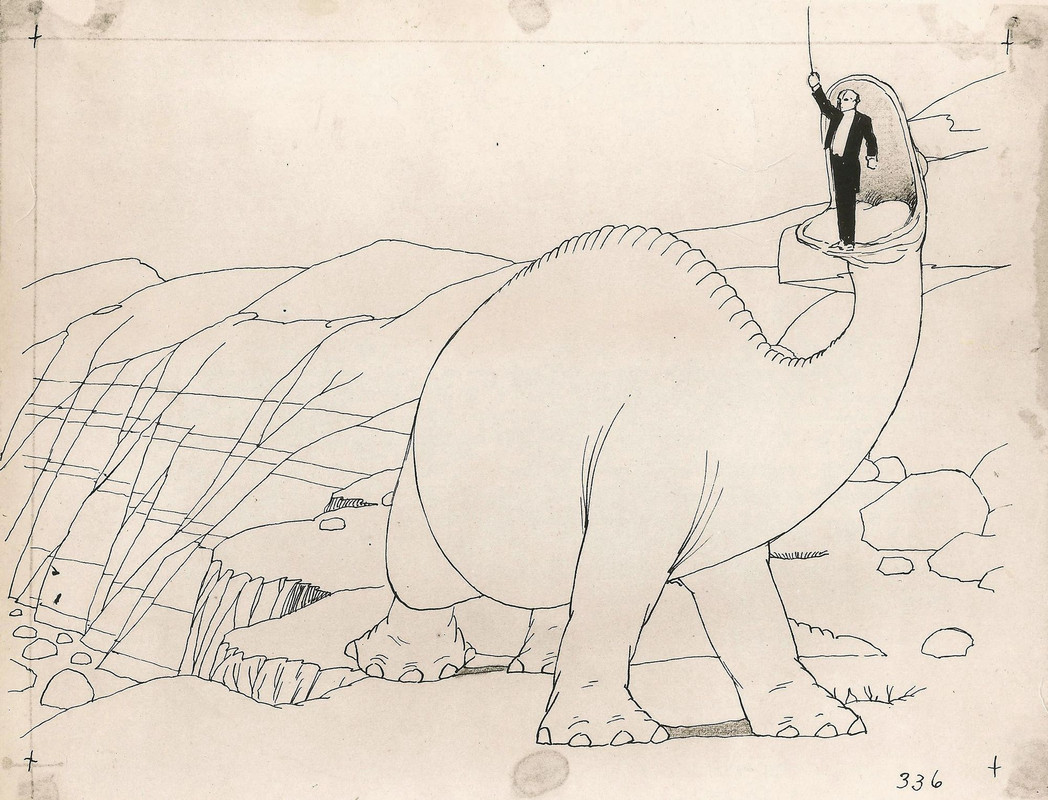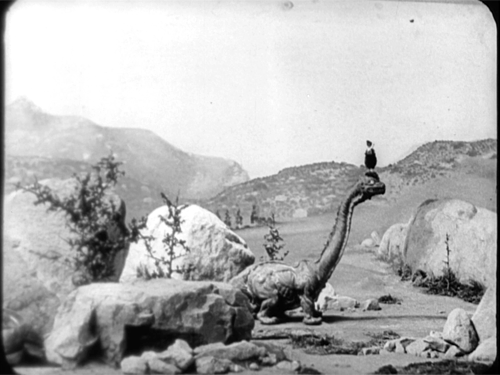“Today over lunch I tried to improve morale and build a sense of camaraderie among the men by holding a humorous, round-robin discussion of the early days of the mission. My overtures were brutally rejected. These men do not want a happy ship. They are deeply sick and try to compensate by making me feel miserable.”Dark Star (John Carpenter, 1974)
Jun
23
space lunch

The men enjoying a joyless lunch, consisting of something semi-liquid in a squeeze packet. DP: Douglas Knapp.
– Sgt. Pinback's video diary
comedy
“You know, I wish I had my board with me… even if I could just wax it once in a while.” Dark Star (John Carpenter, 1974)
Jun
17
International Surfing Day

Lt. Doolittle (Brian Narelle) dreaming of catching that wave. DP: Douglas Knapp.
On the other end of outer space, far far away from existentialist odysseys and crypto-fascist space operas, there's a little stoner cosmos where a small, dilapidated starship manned by long-haired freaks drifts about.
– Lt. Doolittle
Dark Star started out as a highly ambitious, underfunded student film that, in a blessed pre-Lucas, pre-blockbuster universe, got recognised for its #counterculture glory. In the early 70s, when #surfing was not yet mainstream and a handful of restless pioneers continued west despite the lack of mainland, a cross-pollination between beach blond daredevils and stoner culture happened.
Carpenter's laidback space odyssey fully embraces the beach bum spirit; it's meandering, incoherent, and whatever the superlative of no-budget may be. With at its core: #boredom, the most honest form of cinema.
“No, Wagner! Stay in Hell where you belong!”Lisztomania (Ken Russell, 1975)
Jun
16
National Richard Day

The cover of November 1975's films and filming (NSFW). Richard Wagner (Paul Nicholas) appears as a vampire in a German sailor uniform to Franz Liszt (Roger Daltrey). DP: Peter Suschitzky.
– Franz Liszt
“As I want it, so it will be!”The Man Who Could Work Miracles (Lothar Mendes + Alexander Korda, 1936)
Jun
15
fruit

George McWhirter Fotheringay (Roland Young) waking up to an abundance of tropical foods in a crystal bowl, plus multiple expensive watches. His ill-fitting pajamas miss a button. DP: Harold Rosson.
– George McWhirter Fotheringay
“Now, until the break of day,
Through this house each fairy stray…”A Midsummer Night's Dream (William Dieterle + Max Reinhardt, 1935)
Jun
10
Superman Week

Oberon (Victor Jory) – King of the Fairies – on his horse with Puck (Mickey Rooney) – a trickster sprite. While they ride of, Oberon's cape flows behind them through the trees, supported by the fae. A lot of the other-worldly fairy sparkle was accomplished by generous amounts of DuPont® cellophane and cinematographer Hal Mohr's contribution of trimming the trees with aluminium paint, cobwebs, and small metal particles. DP: Hal Mohr.
Capes, cloaks, and mantles are everywhere in Dieterle and Reinhardt's lavishly outfitted A Midsummer Night's Dream. The dreamlike #CostumeDesign by Max Rée and the uncredited Milo Anderson is as much as a personality as #Shakespeare's characters are.
– Oberon, Act 5, Scene 1
Any reports of Kenneth Anger's presence as the Changeling Prince are greatly exaggerated.
Gertie the Dinosaur (1914)
Gertie raises her creator Winsor McCay in her mouth. McCay holds a dressage whip but in his tuxedo resembles a musical conductor more than a lion tamer. DPs: John A. Fitzsimmons & Winsor McCay.

June 1: dinosaurs for #DinosaurDay
Gertie the Dinosaur (Winsor McCay, 1914)
I made ten thousand cartoons —each one a little bit different from the one preceding it.
Long before we all flocked to the movies, there was vaudeville. Vaudeville comes in many flavours, from raucous song and dance, acrobatics (see #BusterKeaton's start) to chalk talk: a live performance in which an artist would chat and draw on a blackboard in real time. The format is perfect to enlighten and entertain an audience, about the dangers of alcohol, the importance of religion, the demand for women's suffrage.
But where there's a scholar, there's a showman. As a chalk talk consists of a succession of quickly drawn illustrations, one flowing into the next while the performer raps over it, the leap to animation is a logical one. In 1914, a brontosaurus named Gertie and a comic strip creator called Winsor McCay travelled the land – both animated and real.
McCay, known for his fantastic comic strips Little Nemo in Slumberland and its predecessor Dream of the Rarebit Fiend, introduced the great animated animal to the audience with little tidbits of knowledge about the mighty brontosaurus, throw her an apple, demonstrate her gentleness by stepping into the screen (a parlour trick made the transition from real to animated look incredibly convincing) and let Gertie carry him around in her prehistoric world. In front of the delighted audience, the showman then would reappear into our realm.
The movies were young and promising, and Gertie's leap to celluloid was made the very same year. Gertie the Dinosaur (1914), an adaptation of the vaudeville act and the first animated dinosaur movie, moves the stage to a dinner party at the animator's studio, where McCay shows off his animation skills as part of a bet.
Gertie, with its combination of animated and real content, had a huge influence on film makers to come. You can see it in Max Fleischer's wonderful Out of the Inkwell cartoons (1918 – 1929) and Ubi Iwerk's Alice Comedies (1923 – 1927, the only original work that ever came out of the Disney studios). And Buster Keaton? In honour of Gertie he rode a claymation brontosaurus in his Three Ages (1923).
The Boy's (Buster Keaton) nifty use of a pre-Willis O’Brien stop-motion Brontosaurus' high vantage point. DPs: Elgin Lessley & William C. McGann.

#Bales2023FilmChallenge #WinsorMcCay #JohnAFitzsimmons #vaudeville #comedy #dinosaurs #animals #animation #ShortFilm #SilentFilm #USA #1910s
“If you don't eat too many Gummy Bears you could be my co-pilot.”Sinong lumikha ng yoyo? Sinong lumikha ng moon buggy? [Who Invented the Yoyo? Who Invented the Moon Buggy?] (Kidlat Tahimik, 1979)
May
30
National Creativity Day

Kidlat Tahimik test driving his moon buggy, closely followed by faithful crew member Gottlieb (Kidlat Gottlieb Kalayaan). DP: Kidlat Tahimik.
Kidlat, while on Earth, wonders if on the Moon a yoyo behaves any differently. Thanks to his brilliant crew of Bavarian toddlers, his parents' collective aspirations, and generous donations from the First World in the form of assorted junk, he launches the first Filipino space program to find out.
– Kidlat Tahimik, speaking to a budding crew member
Sinong lumikha ng yoyo? is a remarkable display of imaginative filmmaking. Together with Kidlat we ponder about practicalities, suddenly see connections that were obscured by too much thinking, and realise all the new possibilities we have in life. Part documentary, part animation, part fantasy, part sci-fi, Kidlat transports us to yet unexplored spaces!
“Dragoljub
Son of our native land!
Teeth and muscles,
Tried and true
All our hearts go out to you!” “When they hammer your head,
The skull is hard,
And never cracks,
Mother's little babe of steel!
Dragoljub
Son of our native land!”Nevinost bez zaštite [Innocence Unprotected] (Dušan Makavejev, 1968)
May
25
Tap Dance Day

A woman tap dancing on top of the raised barrel of a very large cannon in a circus tent. This scene, lifted from Цирк [Tsirk / Circus] (DPs: Grigoriy Aleksandrov & Isidor Simkov; DPs Vladimir Nilsen & Boris Petrov, 1936) inspired Dragoljub Aleksić – a trained blacksmith – to build his own cannon to shoot people out off. DPs: Branko Perak & Stevan Mišković.
Nevinost bez zaštite is a treasure trove. Of fantastic people, feats, footage, and genres. We sit down to watch #Serbia's first feature talkie, also named Nevinost bez zaštite (1943), and are joined by the people who created it.
While they speak, and occasionally burst out into song, about living in Yugoslavia under Nazi, then communist control, we meet Dragoljub!, the movie's lead with the jaws of steel. A man of great works, humanitarian and other, demonstrates his iron will. And while so, we all, starstruck and in love, sing:
– We're out of love potion. What now? – Take this one, for colic and bunions. What matters is how the bottle looks and how the potion tastes.Ansiktet [The Magician / The Face] (Ingmar Bergman, 1958)
May
22
love potion

Coach driver Simson (Lars Ekborg) serving maid Sara (Bibi Andersson) a potion from a flask. DP: Gunnar Fischer.
“Where are you going, Mr. Hulot?”Trafic [Traffic] (Jacques Tati, 1971)
May
16
National Barbecue Day

A man prepares a steak on his nifty Renault 4 Altra grill (there's a pun), observed by M. Hulot and a perplexed Dutch customs officer. In the background a sign in Dutch that requests to refrain from smoking. DPs: Eduard van der Enden & Marcel Weiss.
Monsieur Hulot – who in his final appearance happens to be an automobile designer – travels to a car show in Amsterdam to demonstrate his latest creation, a camper van par excellence. The vehicle of course accommodates the latest gadgets, such as a collapsible grill.
However regarded as a lesser #Tati, Trafic, is another display of lovingly choreographed insanity, notably a #CarCrash that makes me wonder if this was Tati's attempt to transpose Godard's Week-end (1967) into a pleasant, pre-May 68 France.